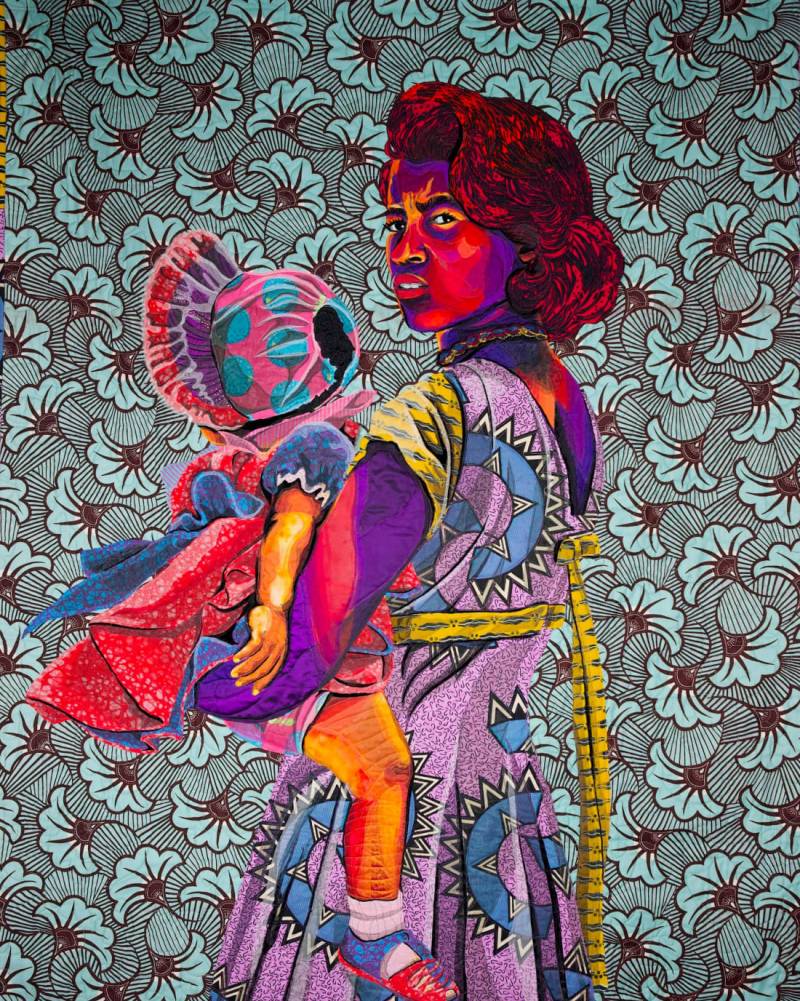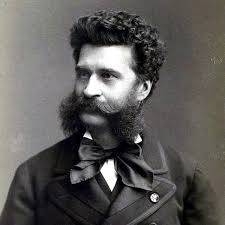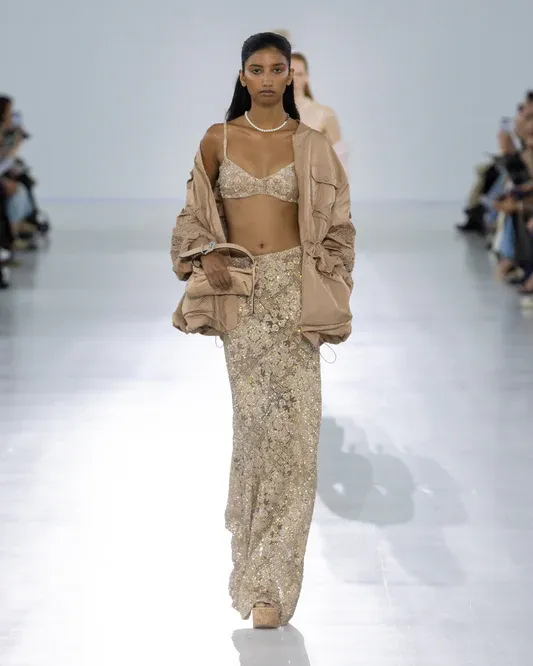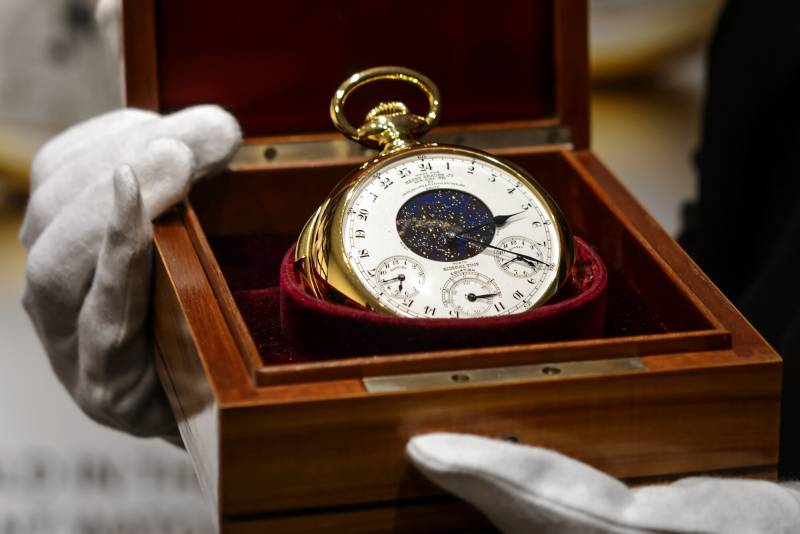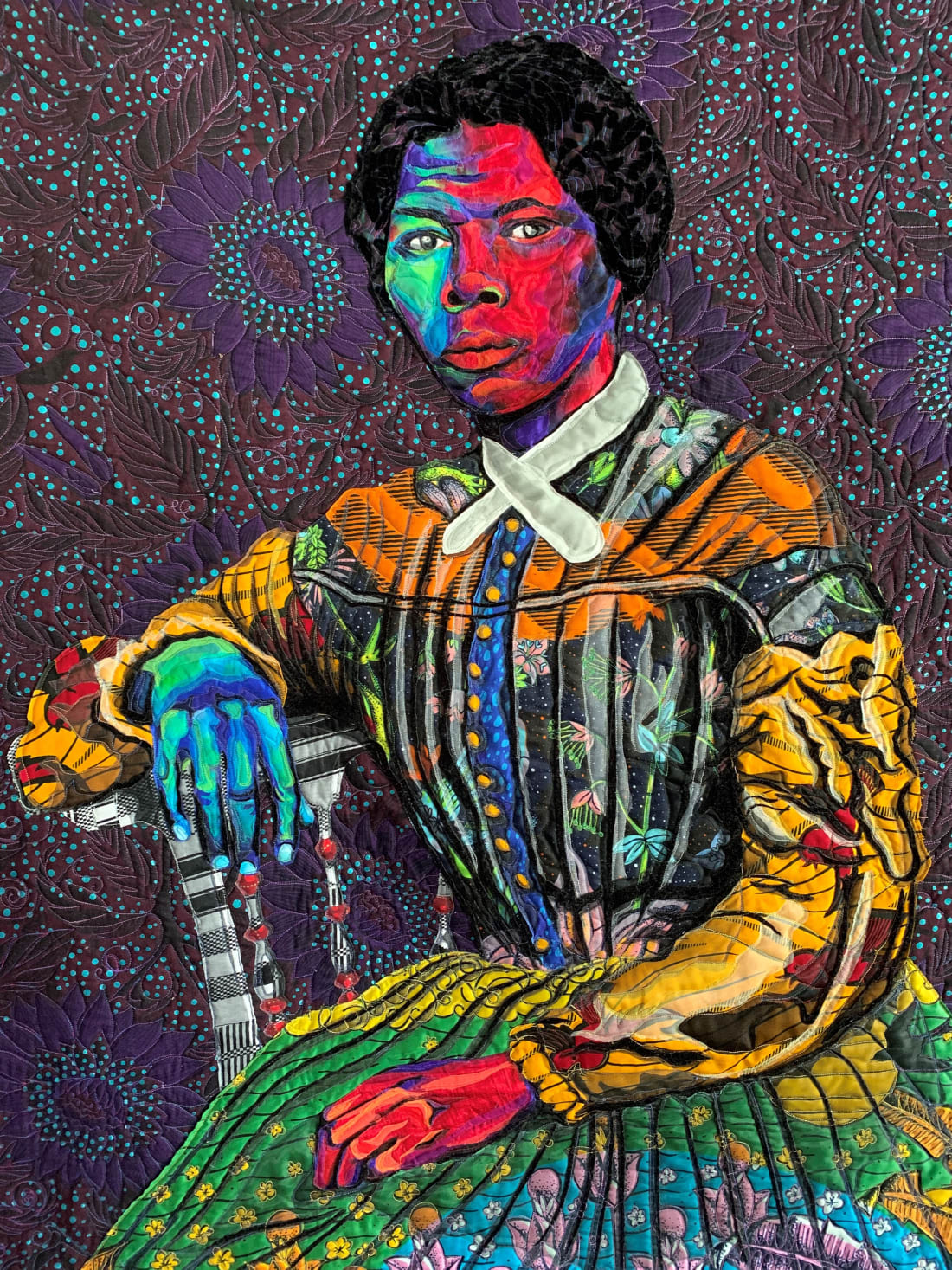
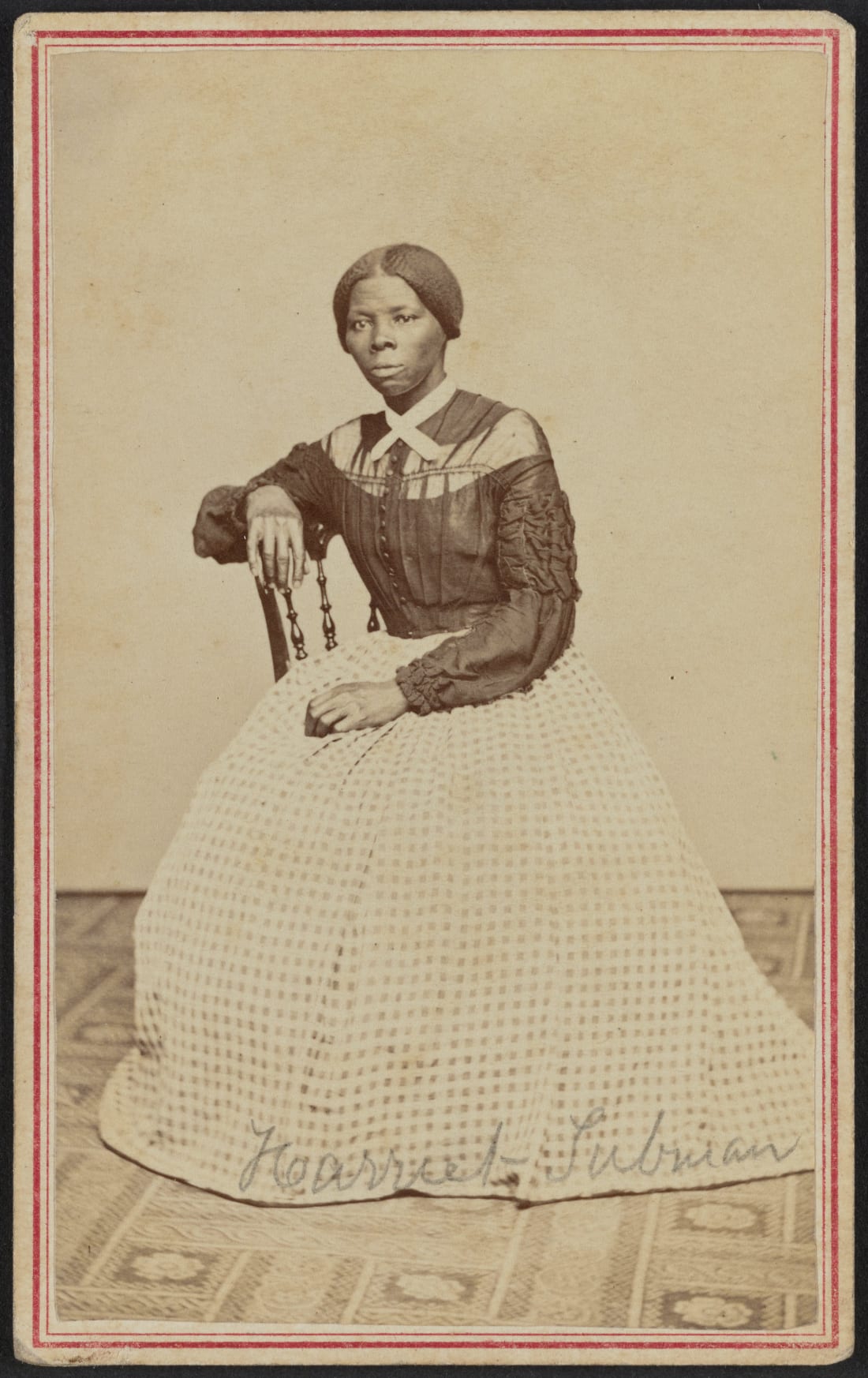
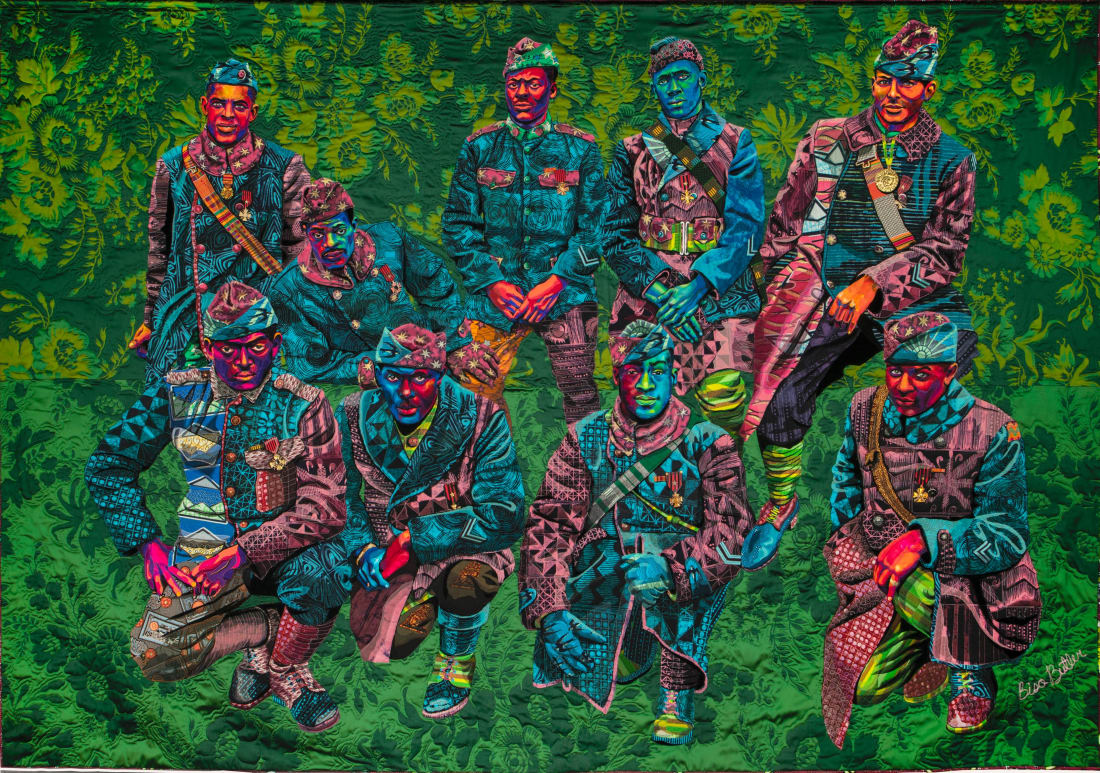
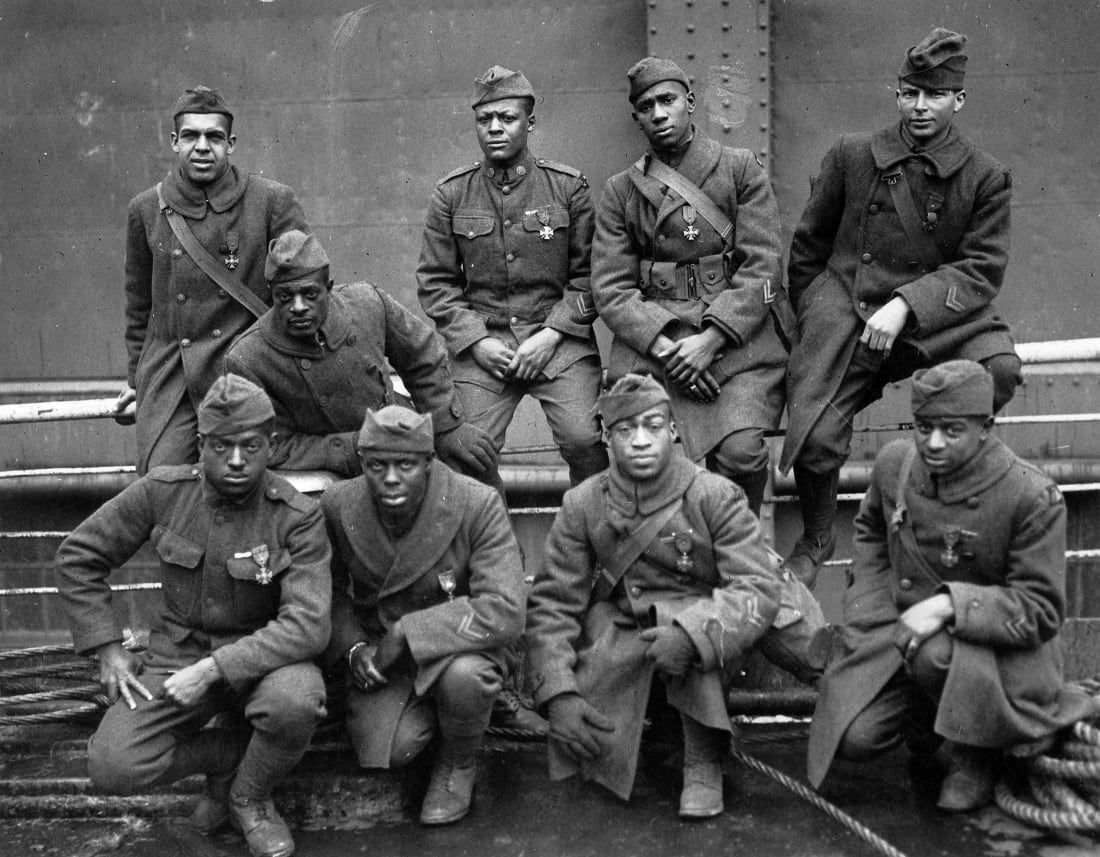
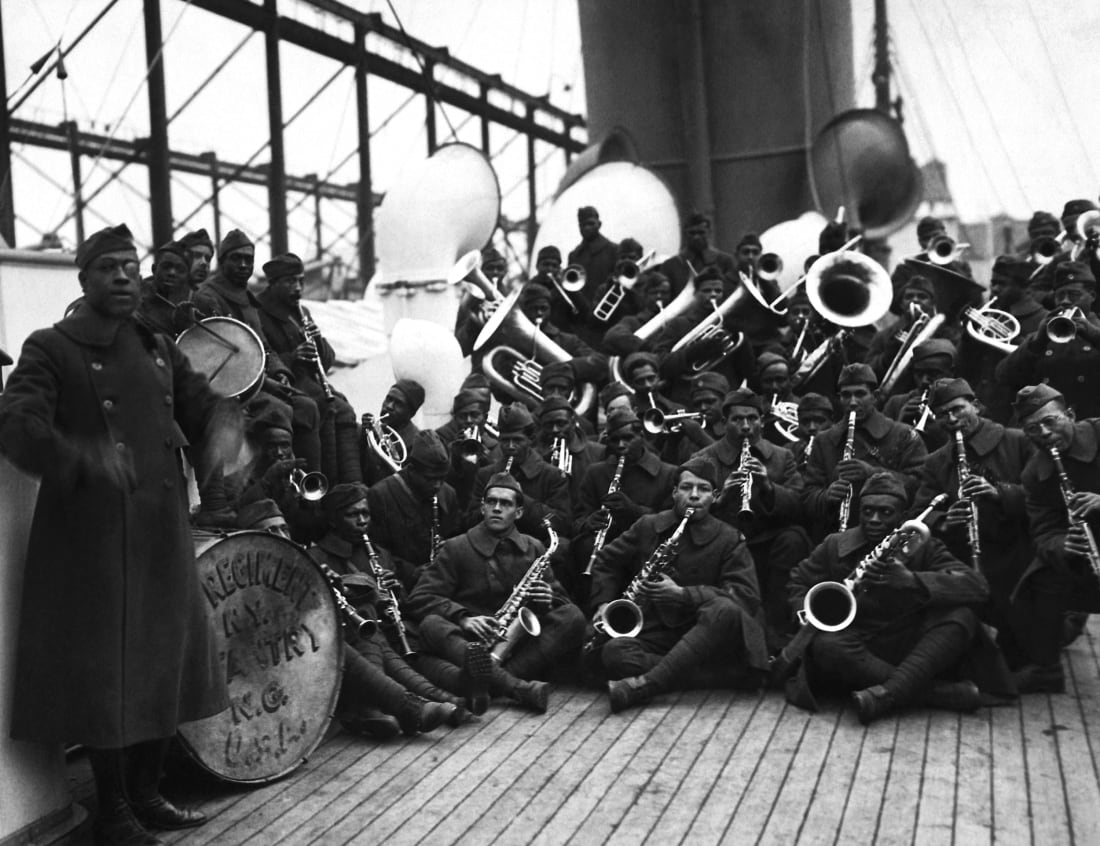

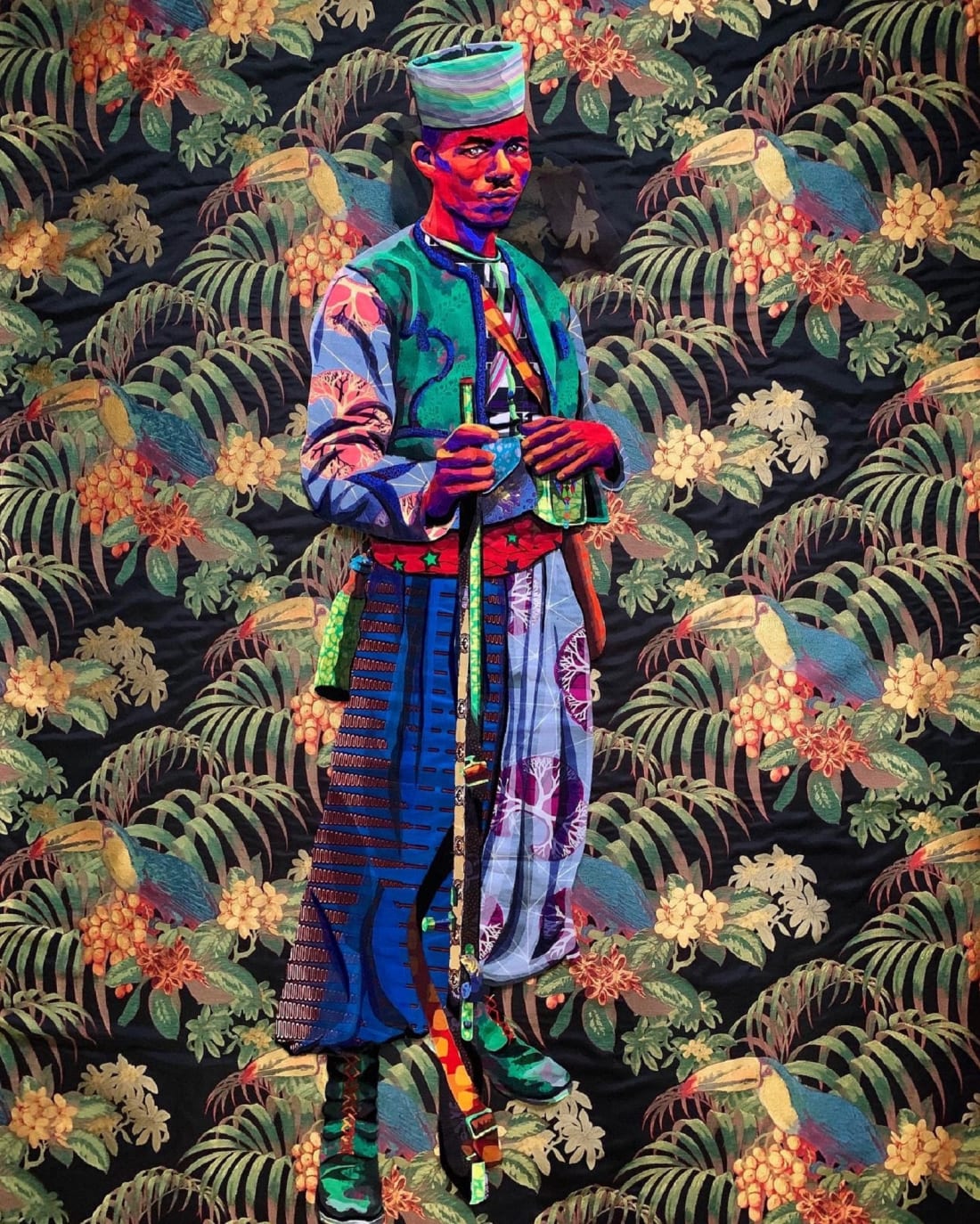
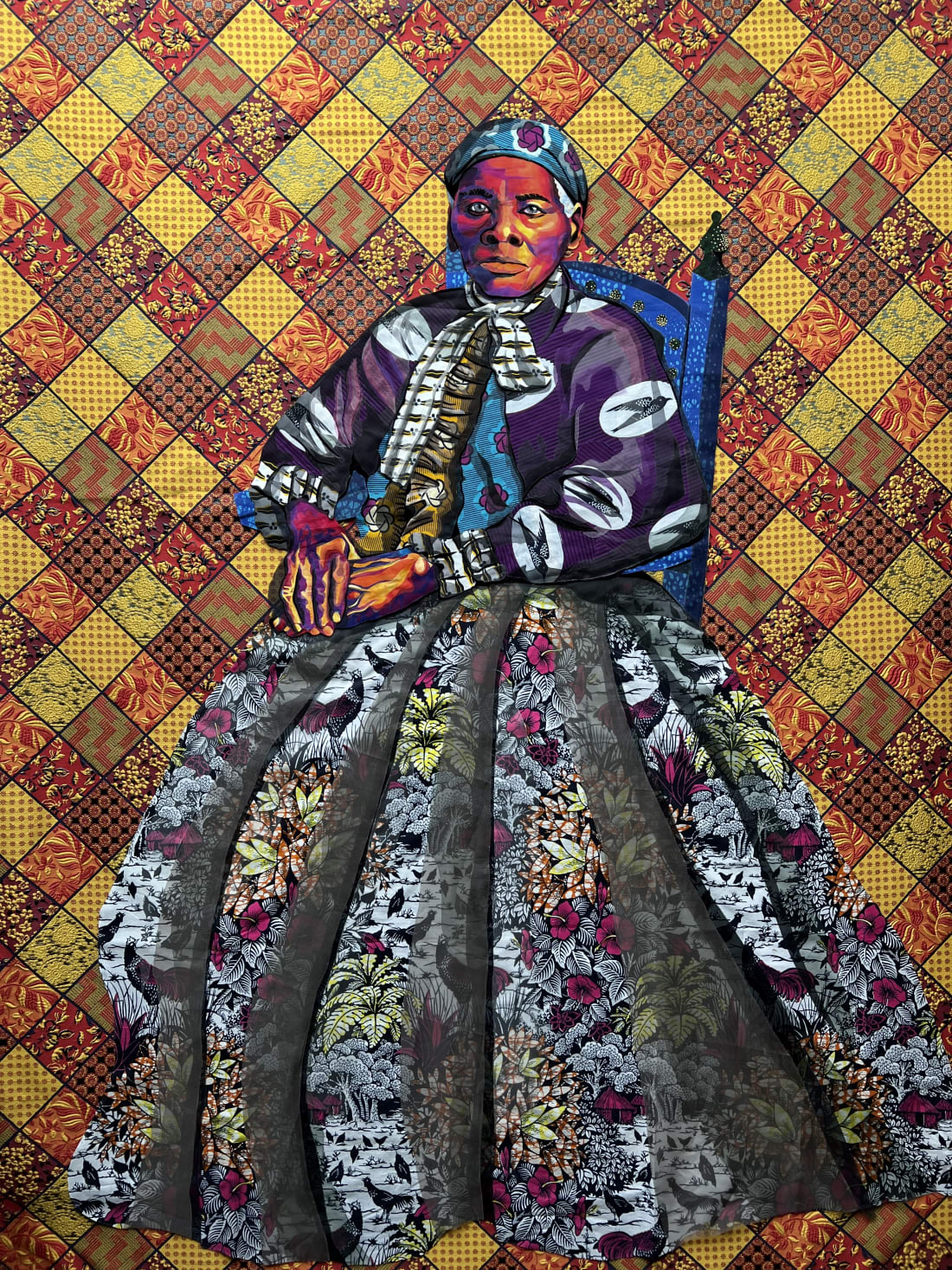
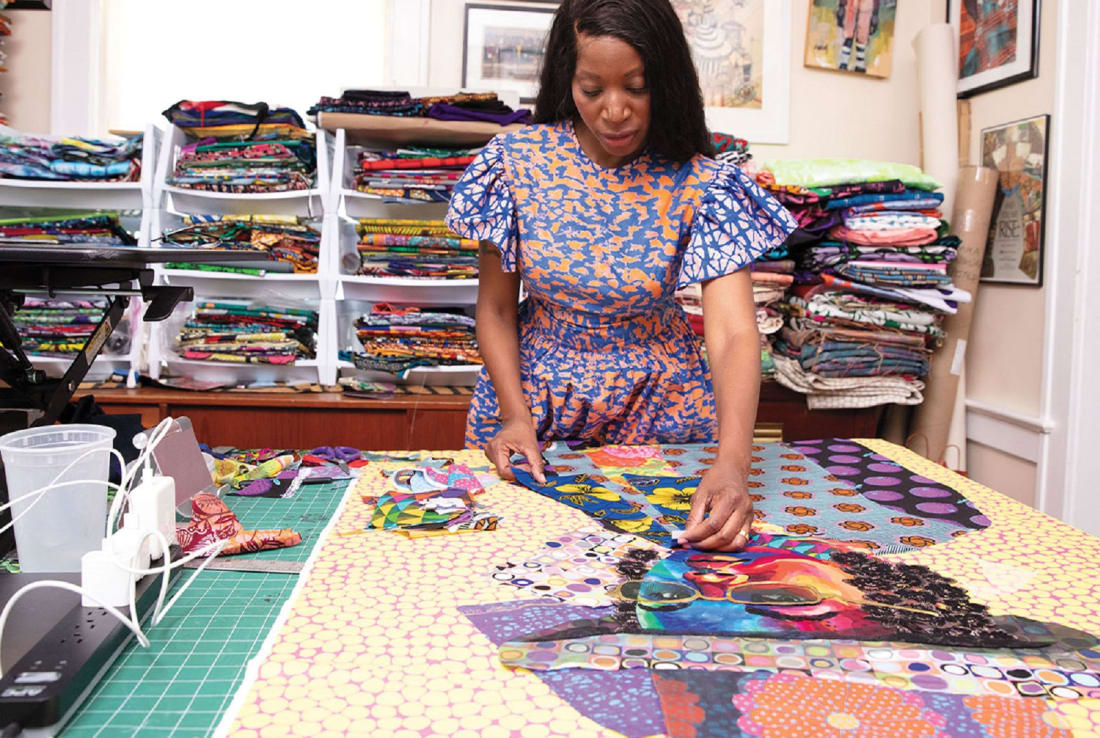

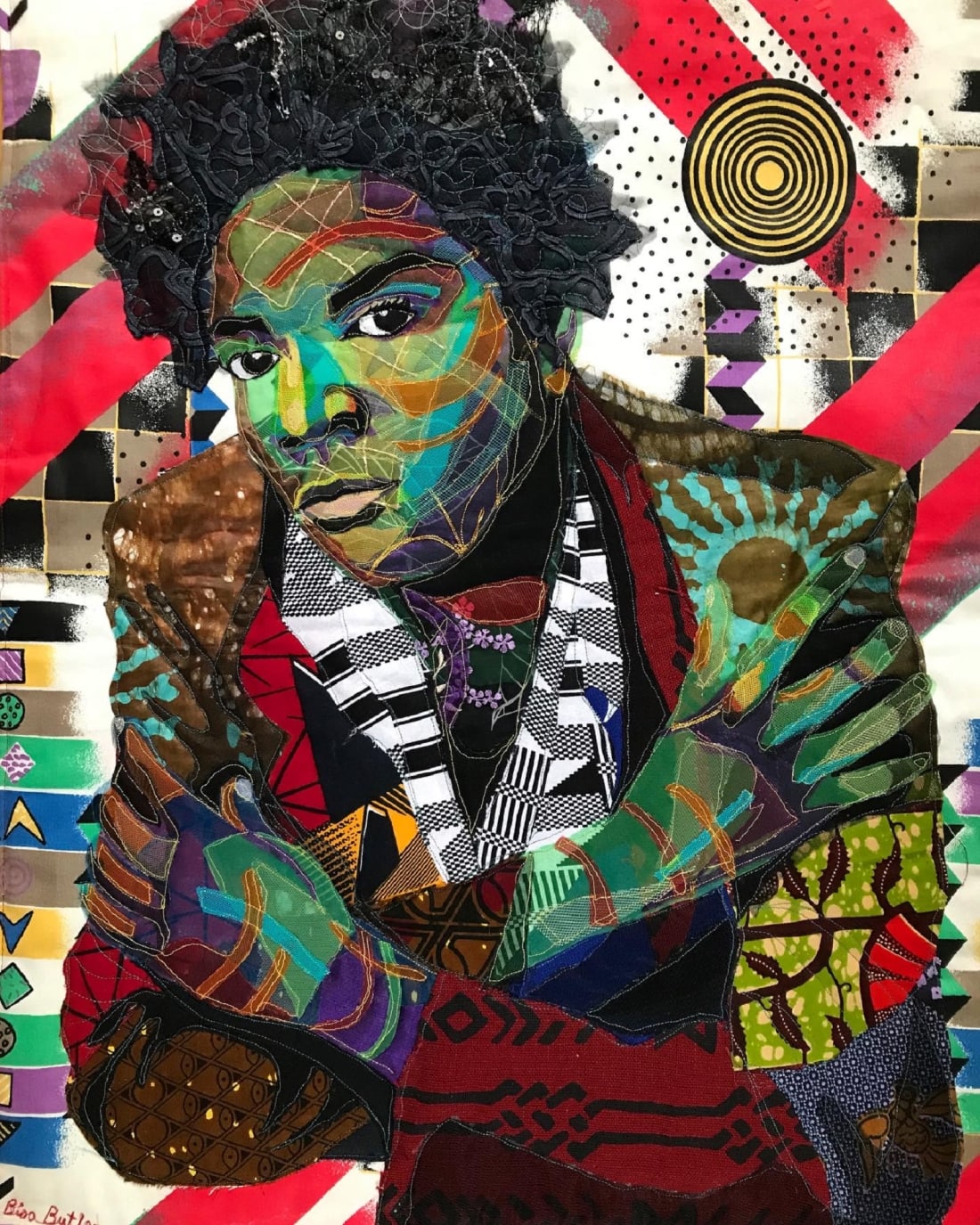
Bisa Butler's stunning quilted portraits celebrate Black identity and African roots
Brilliantly colored and full of visual drama, Bisa Butler's larger-than-life sized quilted portraits are nearly indistinguishable from paintings. Creating works that have appeared on the cover of Time Magazine, and sold at auction for up to $75,000, Butler is taking quilting into the realms of high art.
For over 20 years, Butler, who is based in New Jersey and whose father is Ghanaian, has been making quilts honoring "people of African descent," ranging from unknown subjects copied from old photographs, to more contemporary figures, such as the late Kenyan environmental, social and political activist Wangari Mathaai and the late Hollywood actor Chadwick Boseman.
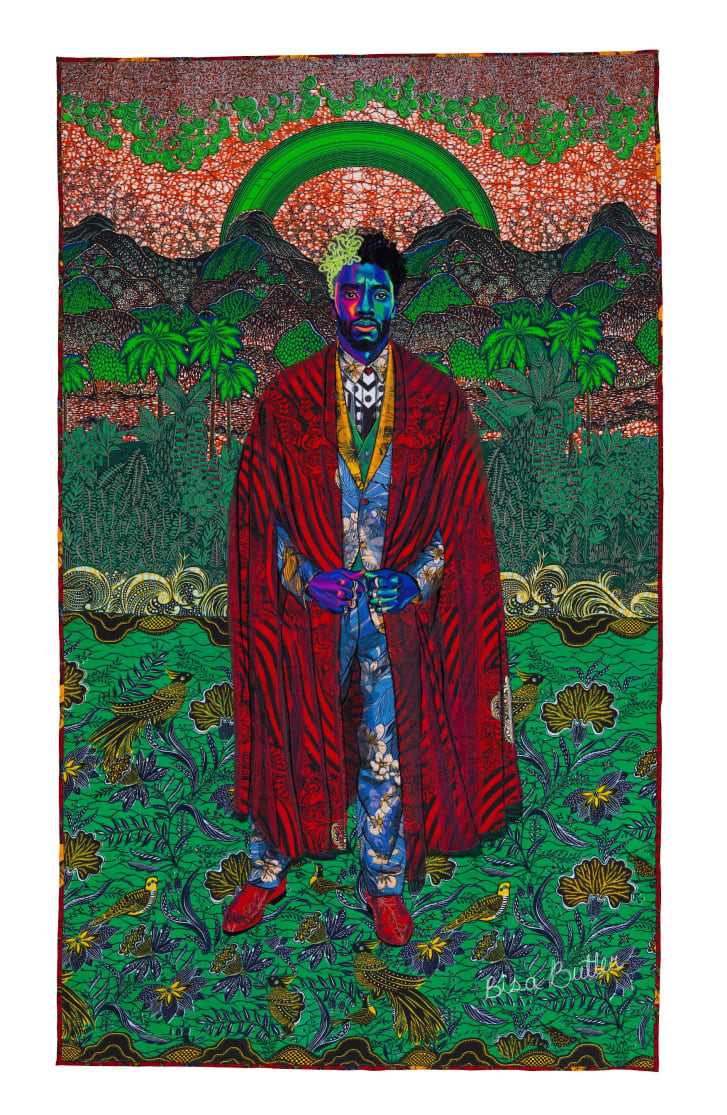
Bisa Butler's quilt, "Forever" (2020) , made in honor of the late Hollywood actor Chadwick Boseman. Credit: photo © Bisa Butler © Museum Associates/LACMA
"I hope Black people see a reflection of themselves," she says, "and I hope people of all races see themselves as well and realize we are all human beings."
Her largest piece to date -- a 13 feet by 11 feet portrait of the "Harlem Hellfighters," an African American infantry regiment that spent more time on the frontlines than any other American troops in World War I -- is part of an exhibition of crafts that opened last month at the Renwick Gallery, a branch of the prestigious Smithsonian American Art Museum in Washington, DC.
But Butler, a formally trained artist, only began her journey into quilting because she was struggling with a painting.
Using fabrics to "describe the inner person"
In 2001, while studying for her master's degree in art education at Montclair State University, in New Jersey, Butler, spent her weekends painting a portrait of her grandmother. However, her grandmother was unhappy with the image.
"I saw her as my old grandma and she saw herself as a woman," Butler recalled.
Myth, magic and monsters: This photographer is creating Black fantasy water creatures
To create a portrait that would embody her grandmother's personality and life experiences, Butler began using fabrics to "describe the inner person." Working from a photograph of her grandparents' wedding, Butler made a quilt that incorporated silks and lace from her grandmother's leftover dressmaking materials, referencing her fondness for sewing and for wearing replicas of smart designer outfits.
Capturing multiple dimensions of the woman's identity, the piece became Butler's first quilted portrait and was gifted to her bedridden grandmother, who had taught her how to sew. "It really was the perfect way for me to show her how much she meant to me," Butler recalled.
Butler soon became known for crafting quilted portraits that offer a nuanced interpretation of their subjects' historical, cultural and personal narratives, all the while paying tribute to Butler's West African roots and African American heritage.
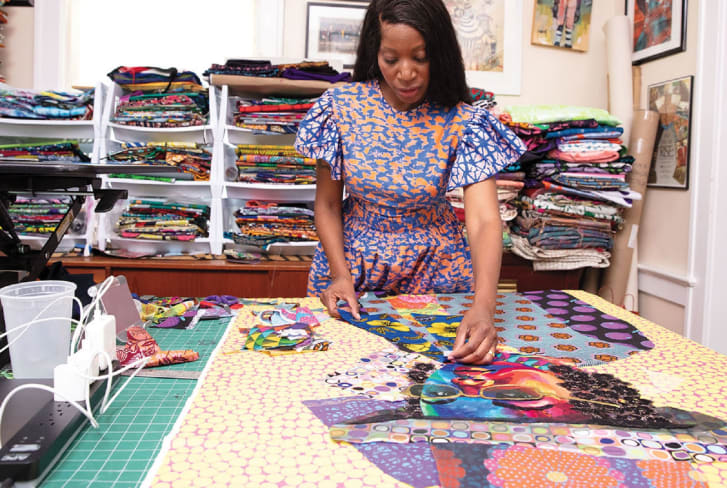
Bisa Butler working with fabrics. Credit: Jill Feyer
Her pieces are often based on black-and-white photographs of ordinary Black people, taken between the 1850s and 1950s and sourced from the National Archives.
"I am attracted to the past," Butler said, adding that she likes to work from photographs to which she feels a personal connection. "I find myself drawn to images that have some sort of magnetism that is grabbing me," she explained. Often, "it would just be a gaze."
Once she has chosen an image, Butler "can end up studying it for over 100 hours." The subject's facial expressions, body language and pose, as well as their clothes and accessories, are all useful clues to figuring out what they were like as people. Getting beneath their skin is an idea that's central to her work.
"If they were to ever see this portrait, if their family were to ever see it ... do they feel that the artist respected them in the image?" said Butler.
Quilting has an artistic and pragmatic cultural legacy within African American heritage -- for example, the work of the women of Gee's Bend, Alabama. Descendants of enslaved African Americans and living in a remote community, their distinctive quilting style gained national attention in the 1960s with their brightly colored geometric designs described by one critic as "miraculous works of modern art."
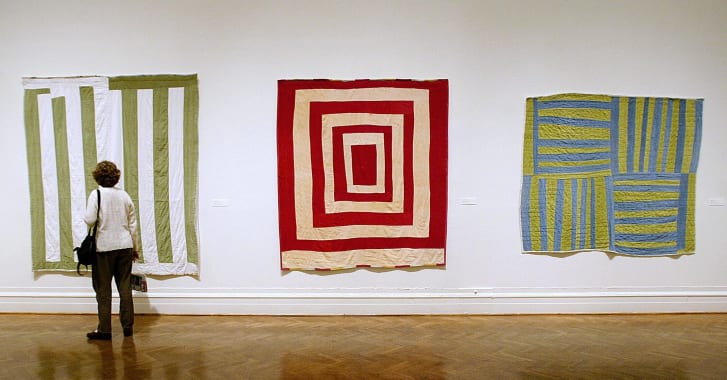
"The Quilts of Gee's Bend" exhibition at the Cocoran Gallery of Art in Washington, DC, in 2004. Credit: STEPHEN JAFFE/AFP/AFP via Getty Images
"Sewing the diaspora together"
Butler adds to this legacy by using a variety of American and African fabrics, including traditional kente cloths from Ghana. The colors and patterns give her portraits spectacular visual and narrative color while connecting her works to the African continent.
Fred Ebami is illustrating modern Africa with his contemporary take on Pop Art
She seamlessly layers the fabrics using a technique that was also used to create traditional West African appliqué cloths in Benin. The process can take Butler up to 200 hours, after which she begins tracing out traditional kente cloth patterns in her quilting stitches.
"I'm trying to link the diaspora together or sew it together on my quilt," Butler said. "Whether I'm making a portrait of a Black American or an African, we have the same ancestry."
Butler's quilt of nine Harlem Hellfighters took 11 months to complete. Researching the soldiers' lives, she saw similarities between the racial injustice of the past and the present. Despite their bravery in combat, at home they faced the same discrimination and segregation as other African Americans.
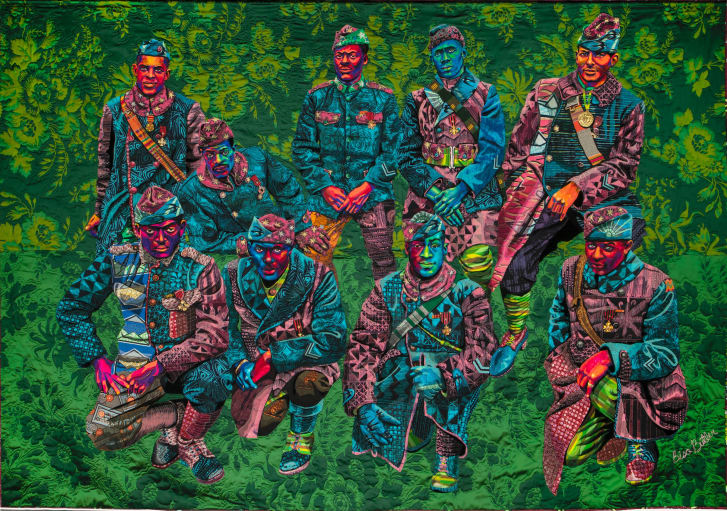
Bisa Butler's quilt of the "Harlem Hellfighters" -- a nickname of the 369th Infantry Regiment. Credit: Bisa Butler
To honor their resilience, Butler used a Nigerian adire cloth, made of indigo-dyed cotton adorned with symbols from an ancient script in the West African Yoruba language, and a traditional Malian mudcloth. Mudcloths are often patterned with repeated geometric shapes and symbols that represent social status, historical events and a person's character. Butler used this cloth to signify the troops' long journey through conflict.
The Harlem Hellfighters were posthumously awarded a Congressional Gold Medal in September 2021. Now, with her quilt of the troops showcased at the Smithsonian's Renwick Gallery, only one block from the White House, Butler hopes her work can bring the soldiers' story to the attention of more people.
"I'm very much a believer in the spiritual sense that they see," she said. "And I hope that they can recognize that I'm doing what I can to put them in a position that they should have been in the first place."
"This Present Moment: Crafting a Better World," is on view at the Renwick Gallery until April 2, 2023.
